
Leonardo da Vincis inventions have fascinated people for hundreds of years. It can be hard to know which ones truly changed the world.
Discovering da Vinci’s top inventions helps you see how his creative genius still shapes technology, art, and science today.
This article overviews the most critical designs, allowing you to appreciate the wide range of his work.
You will learn about some of da Vinci’s most inspiring ideas, from early flying machines to advancements in engineering. Exploring these inventions helps you understand why da Vinci is known as one of history’s greatest inventors.
1. Ornithopter – a flying machine inspired by bird flight
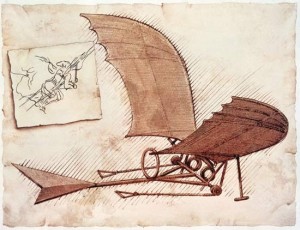
One of Leonardo da Vinci’s best-known inventions is the ornithopter, a flying machine inspired by bird flight. He designed it by observing how birds use their wings to fly.
His sketches show wings that flap, much like birds’ wings in nature. Leonardo’s ornithopter never actually flew, but it demonstrates his deep interest in engineering and mechanical design.
The idea behind the ornithopter highlights his focus on aerodynamics and his belief that studying nature could lead to technological advances. Many experts consider the ornithopter an excellent example of Renaissance innovation.
It symbolizes Da Vinci’s creativity and his role as a visionary in science and inventions. Today, you can see images and learn more about Leonardo’s flying machine on many reputable websites, including this overview of his flying machine concept.
Leonardo da Vinci’s work on the ornithopter continues to influence modern science and technology. His designs encouraged later inventors to dream about human flight and try new experimental machines.
2. Armored fighting vehicle – early concept of a tank
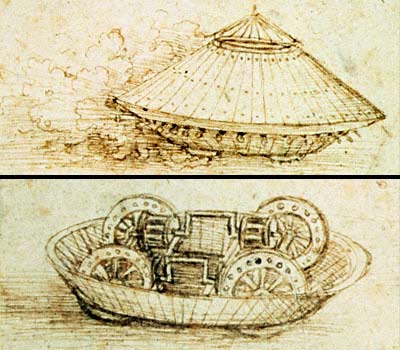
Armored vehicle innovation stands out in Leonardo da Vinci’s notebooks. He designed an armored fighting vehicle resembling a heavy, round shell with slanted sides.
This early concept of a tank aimed to keep soldiers safe while they moved and fired weapons. Leonardo’s armored car used a conical shape that could deflect enemy fire.
It included multiple cannons arranged around the outside, letting it shoot in all directions. A crew inside the vehicle would power it by turning cranks connected to the wheels.
Although this design was never used in battle, it shows his skill in Renaissance engineering. Although his prototype had steering and movement problems, it introduced ideas found in modern military technology.
The armored vehicle design proves Leonardo was ahead of his time. His sketches and drawings showed a strong mix of mechanical engineering principles and creativity.
3. Parachute – a design for safe descent from heights
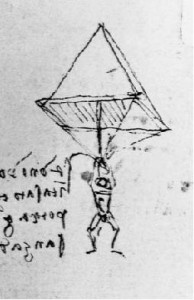
Parachute ideas appeared in Leonardo da Vinci’s notebooks during the Renaissance. He outlined a detailed design for a parachute that would allow a person to descend safely from high places.
His parachute had a pyramid shape, with sealed linen cloth stretched over a frame made of wooden poles. The mechanical design was simple but showed da Vinci’s understanding of aerodynamics.
He described the device as letting a person “throw himself down from any great height without suffering any injury.” In 2000, a parachute based on Leonardo’s sketches and drawings was built and tested successfully, showing that his idea worked centuries ahead.
Leonardo’s design differed from modern round parachutes but was still effective.
4. Helicopter – an aerial screw precursor
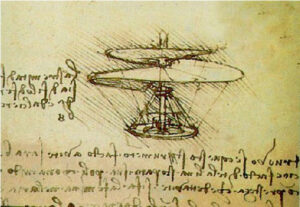
The helicopter (aerial screw) is one of Leonardo da Vinci’s most famous experimental machines. He designed it during the Renaissance, using sketches and drawings in his notebooks to show a flying machine based on aerodynamics.
Da Vinci imagined a large spiral screw made of reed, linen, and wire meant to lift off like a modern helicopter. The aerial screw measured over 15 feet in diameter.
Four men would power it by turning cranks, causing the screw to spin and “drill” into the air. Although this prototype never flew, it used mechanical engineering principles far ahead of his time.
Leonardo’s design for the aerial screw showed his creativity and his belief in flight inspired by birds. It remains a key example of science and inventions from the Renaissance.
5. Self-propelled cart – early automobile design
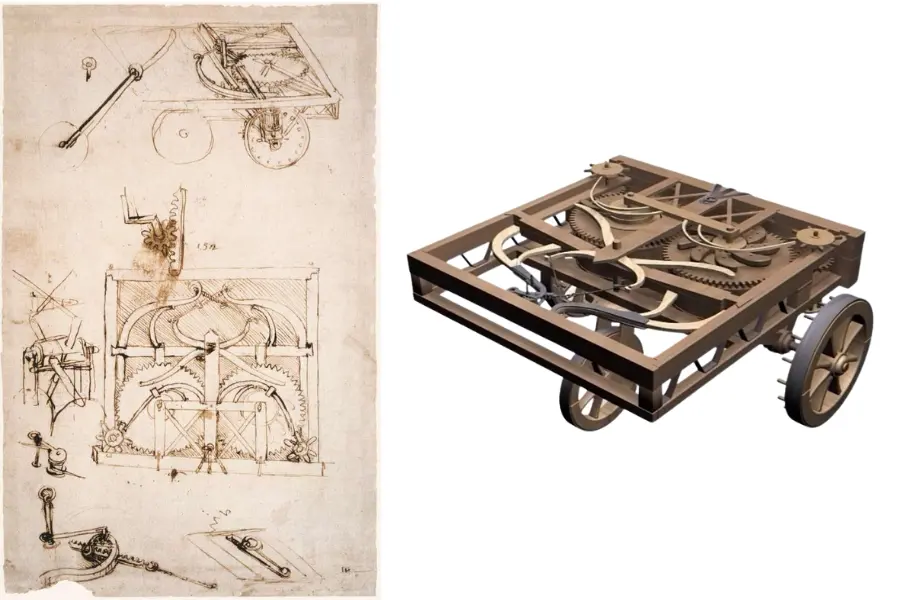
Leonardo da Vinci’s self-propelled cart, designed in the late 15th century, stands out as an important example of Renaissance engineering. It could move without being pushed or pulled by hand.
Its design marked a major step forward toward the idea of an automobile. The cart featured a system of coiled springs and gears.
These mechanical devices stored and released energy, moving the cart forward in a controlled way. Leonardo included a very advanced steering mechanism to change direction.
This invention showed Leonardo’s mastery of mechanical engineering principles. Many people consider this cart the ancestor of the modern automobile, long before motorized vehicles existed.
His original sketches and drawings of the prototype have inspired engineers for centuries.
6. Diving suit – for underwater exploration
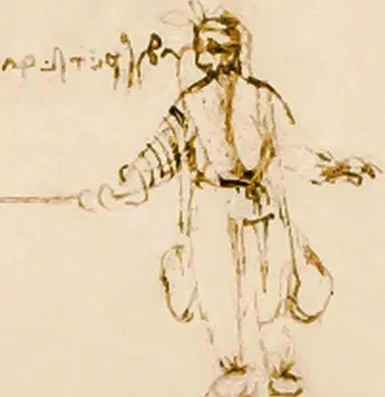
Leonardo da Vinci’s notebooks show his design for a diving suit, another example of Renaissance engineering. In the late 15th century, he designed this suit to help people explore underwater.
The sketches show a leather suit with a mask and long breathing tubes that would let a person stay beneath the surface for longer periods. His plan used cane tubes connected to a floating device for air, which was inventive before modern scuba technology.
The structural details reveal his creativity and his understanding of mechanical engineering principles. The design featured a bell-shaped device on the surface to supply fresh air, using simple yet effective technology for the time.
Da Vinci’s diving suit never reached the prototype stage, but the concept was ahead of his time. His ideas in underwater exploration inspired later engineers to develop more advanced gear.
7. Giant crossbow – large-scale siege weapon
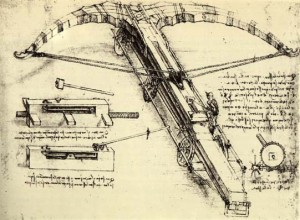
The giant crossbow was one of Leonardo da Vinci’s most extraordinary examples of Renaissance engineering. Designed to intimidate and break enemy ranks, this massive siege weapon measured about 27 yards wide and used six wheels for mobility.
Leonardo’s innovative ideas for military technology stand out in his detailed sketches and drawings. The mechanical design reflected his understanding of physics and mechanics, aiming to launch huge projectiles over long distances.
Although this machine was never built, it shows how his conceptual inventions were often ahead of their time. Many believe the giant crossbow was meant more for psychological impact than practical use.
His notebooks contain many other experimental machines, including the giant crossbow and armored vehicles, which helped shape his legacy as a genius.
8. Ball bearing – reducing friction
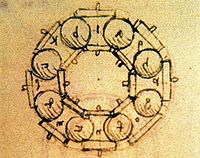
Leonardo da Vinci ball bearing is one of his most practical innovations. He designed it to reduce friction between moving parts in machines, making motion smoother and easier.
This idea shows his deep understanding of mechanical engineering principles. During the Renaissance, he included sketches and drawings of ball bearings in his notebooks.
Leonardo used his scientific observation to shape early ideas about how machines work. His design placed small spheres between surfaces, letting them move freely and reducing wear over time.
Though he never built a working prototype, the basic idea behind the ball bearing inspired many later inventions. Today, ball bearings are in cars, bicycles, and other machines, proving the legacy of Leonardo’s innovation in mechanical devices.
Many modern engineers study his sketches to understand the roots of mechanical design. Leonardo da Vinci’s notebooks continue to influence engineering and science centuries after his lifetime.
9. Cam hammer – automate repeated hammering
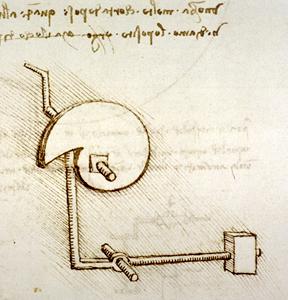
Leonardo da Vinci’s Cam hammer is a key example of Renaissance engineering. This mechanical device uses a cam and hammer system to automate repeated hammering, making metalworking easier and less tiring for workers.
Instead of requiring constant manual labor, the cam lifts the hammer and lets it drop with force, turning a complex task into an efficient process. Leonardo’s design shows his deep understanding of mechanical engineering principles.
His detailed sketches and drawings focus on improving everyday work through innovation. Many experts consider the cam hammer ahead of its time.
It marks a shift toward machines doing more of the hard work humans once did. Leonardo’s creativity helped inspire future scientists and inventors to build on mechanical engineering ideas for centuries.
10. Robotic knight – mechanical automaton
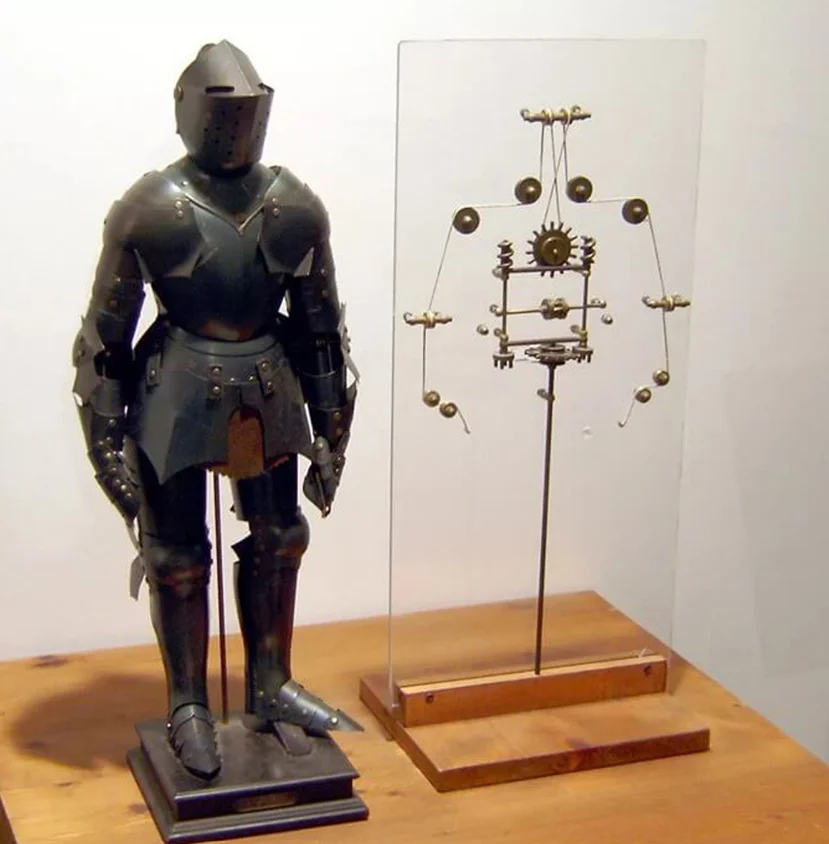
The robotic knight, often a mechanical automaton, is one of Leonardo da Vinci’s most fascinating creations. He designed this life-size armored figure around 1495.
The robotic knight could sit up, move its head, and wave its arms using pulleys and gears. Leonardo’s interest in mechanical devices shaped much of his work.
His notebooks reveal careful sketches of this early robot. The design highlighted his understanding of anatomy and engineering principles.
The robotic knight is a prime example of Renaissance innovation. It showed how combining art and science led to early experiments with machinery.
The mechanical automaton paved the way for future robotics and military technology developments. Leonardo’s visionary ideas continue to inspire science and engineering today.
11. Catapult – leaf springs to build up tension
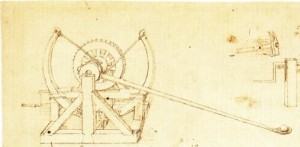
Leonardo da Vinci’s notebooks show his strong interest in military technology and mechanical engineering principles. The Leonardo da Vinci Catapult stands out as an example of his creative integration of art and science during the Renaissance.
Unlike earlier catapults, Leonardo’s design uses a set of leaf springs to build up tension rather than ropes or twisted cords. This innovation advanced the idea and showed his problem-solving and mechanical design skills.
The catapult demonstrates how Leonardo sought ways to improve and modernize weapons of war. His sketches and drawings carefully laid out each part and the planned firing mechanism.
While he did not build a working prototype, the detailed plans reflect his approach to experimental machines
12. Ideal city plan – urban design concept
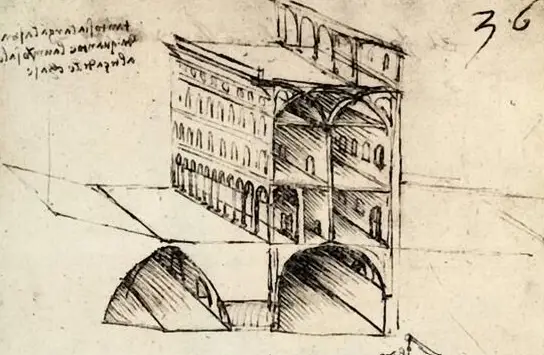
Leonardo da Vinci’s notebooks reveal his vision for an ideal city. His plan focused on sanitation, wide streets, and fresh air to prevent diseases and improve daily life.
This was an important example of Renaissance engineering and scientific observation. He designed the city with layered streets, separating people, traffic, and animals.
Leonardo included underground waterways to handle waste and keep the city clean. He also thought about accessibility and efficient communication between different parts of the city.
These concepts influenced modern urban planning by combining creativity with practical engineering. Many features of his ideal city remained unbuilt inventions but inspired later city designs.
13. Triple-barreled cannon
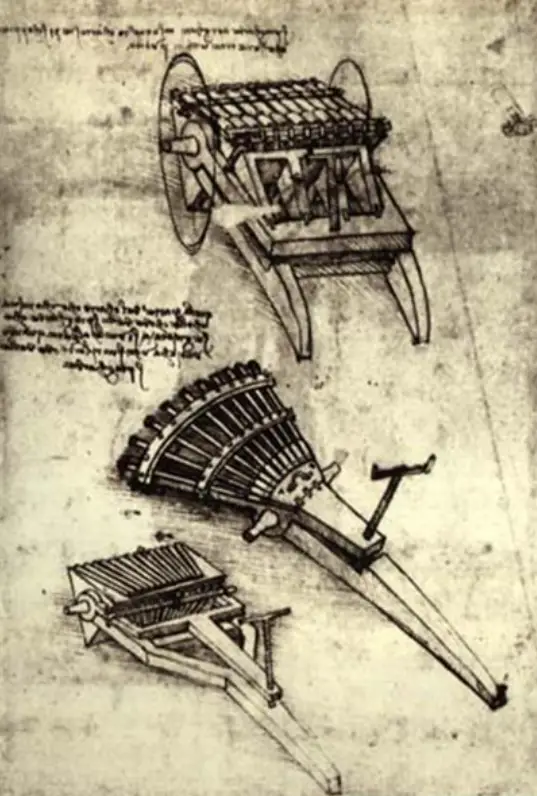
The triple-barreled cannon was one of Leonardo da Vinci’s experiments in military technology. He designed this weapon to solve problems faced during the Renaissance, when cannons were slow to reload and hard to move.
The design featured three barrels lined up on a single frame. This made it possible to fire shots quickly, one after another, before stopping to reload.
Leonardo’s sketches of this device can be found in his notebooks, showing his skills in engineering principles and Renaissance engineering. This invention aimed to give armies an advantage by combining speed, power, and mobility.
Although it was never built in his lifetime, the triple-barreled cannon stands out as an example of his ability to create advanced mechanical devices. It shares similarities with his other inventions, such as the 33-barreled organ and the giant crossbow.
14. Mechanical drum – early musical instrument
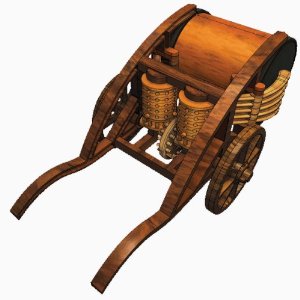
The mechanical drum is one of Leonardo da Vinci’s creative mechanical devices. He designed this instrument during the Renaissance, when art and science often merged.
The mechanical drum used gears and levers to play rhythms automatically. Leonardo’s sketches show how the drum could produce music without a human drummer.
This early machine demonstrates his skill in mechanical design. The drum worked with a rotating barrel filled with pins, which struck the drum as it turned.
This mechanism is an early example of automation in musical instruments. It highlights how Leonardo applied engineering principles to both art and science.
Although the mechanical drum likely remained a prototype, it offered a glimpse into the future of automated music.
15. Anemometer – wind speed measuring device
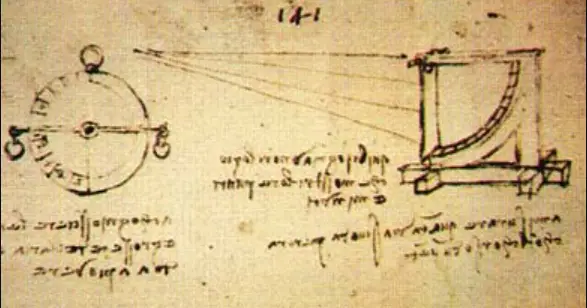
The anemometer was one of Leonardo da Vinci’s inventions inspired by his passion for aviation and science. He designed this device to measure wind speed while exploring flying machine concepts and flight physics.
Leonardo sketched several early models of the anemometer in his notebooks. These sketches showed his understanding of aerodynamics and how wind speed impacts flight.
His version included a plate that swung out in response to the wind, helping to gauge its strength. This invention showcased his engineering approach, combining scientific observation with mechanical design.
The idea of measuring wind speed played an important role in his experiments. Modern anemometers are essential tools in meteorology for recording wind speed and direction.
Leonardo’s original design may not have reached the prototype stage, but his vision helped influence the future of science and inventions.
16. Self-supporting bridge
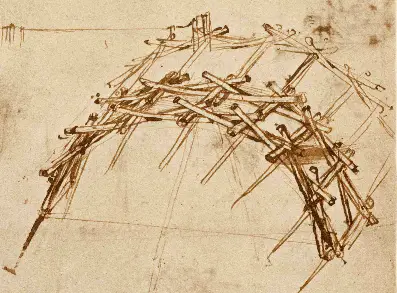
The self-supporting bridge is a great example of Renaissance engineering. Leonardo da Vinci designed this bridge to hold itself up using only the weight and position of its wooden beams.
The bridge does not need nails, ropes, or other fasteners. Its simple design lets soldiers or workers assemble and disassemble it quickly.
This feature made it valuable for military use, especially when armies needed to cross rivers quickly. Many people see the bridge as proof of Leonardo’s creativity and ability to think ahead of his time.
His sketches reveal the careful study of balance and force, key ideas in mechanical engineering principles. Students and engineers often build models of the self-supporting bridge to study its strength and efficiency.
17. Odometer
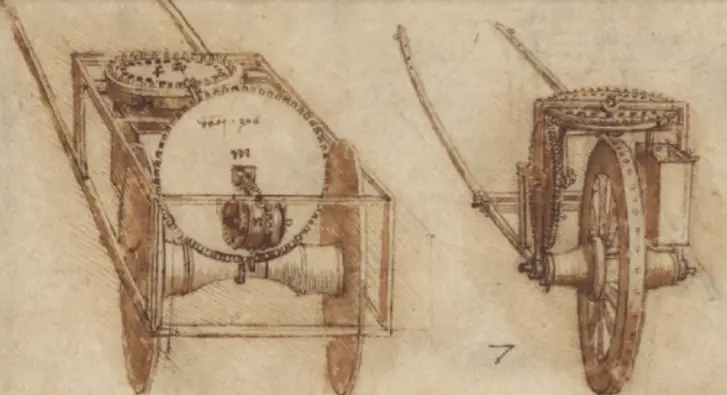
Leonardo da Vinci’s odometer highlights his creativity and skill in Renaissance engineering. This device counted the distance a cart traveled, a helpful tool during a time of growing trade and road building.
He designed it to work using gears that dropped pebbles into a container with every set amount of distance. In his detailed sketches and drawings in da Vinci’s notebooks, he showed how the mechanical devices inside the odometer worked.
The mechanism used toothed wheels and clever gear systems, which were new ideas at the time. This machine was not just theoretical; later inventors used similar ideas to measure distances for travel and engineering projects.
His work on the odometer shows how his concepts influenced modern technology. Even though many of his machines remained prototypes or unbuilt inventions, da Vinci’s efforts pushed the limits of mechanical engineering principles.
18. Machine for grinding convex lenses
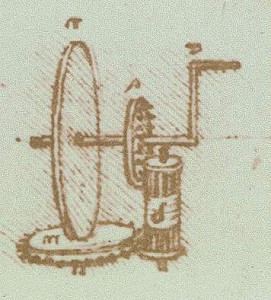
The machine for grinding convex lenses shows Leonardo da Vinci’s creativity and innovation. He designed this device during the Renaissance to improve lens-making, which was important for scientific discovery and vision correction.
He used gears and rotating arms to shape glass into smooth and accurate curves. This process was vital for making lenses for eyeglasses, telescopes, and microscopes.
Leonardo included sketches and drawings of his lens grinding machine in his notebooks. These illustrations helped future inventors understand mechanical engineering principles.
Although not all of his prototypes were built, the lens grinding machine showed how he connected art and science. His development of devices like this influenced the progress of mechanical design.
The impact of Leonardo’s experimental machines can still be seen in modern-day optical instruments.
19. Continuously Variable Transmission (CVT)
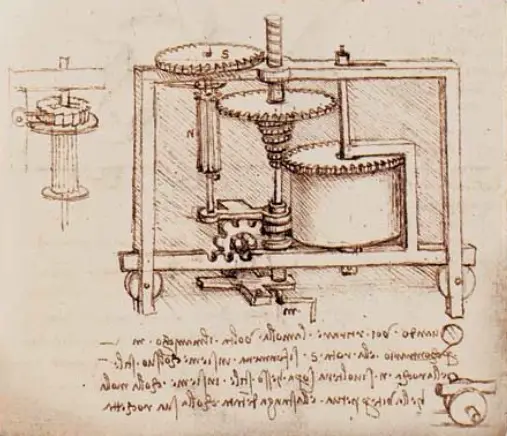
Leonardo da Vinci’s continuously variable transmission (CVT) is a major step in Renaissance engineering. In his detailed notebooks, Leonardo sketched a gearbox that could change its gear ratio continuously without steps.
This concept showed his deep understanding of mechanical engineering principles and his invention legacy. The CVT design offered smoother power transfer compared to the standard gear systems of his time.
Instead of shifting between fixed gears, Leonardo’s design allowed a machine’s wheels to move at many speeds, all powered by the same input. This early idea influenced many later developments in mechanical devices and automotive technology.
Although he never built a working model, Leonardo’s concept was ahead of his time. Engineers still use the principles behind Leonardo’s CVT in modern cars and machines.
20. Canal Lock
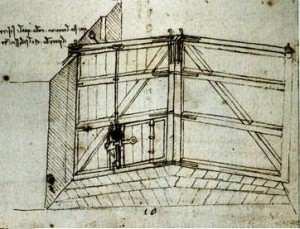
Leonardo da Vinci revolutionized canal lock design by inventing the miter lock, which uses angled gates that seal tightly under water pressure, improving efficiency and safety in water navigation.
His innovative lock system allowed boats to move smoothly between different water levels, influencing major waterways like the Panama and Suez Canals. Beyond functionality, Leonardo’s design harmonized engineering with aesthetics and environmental integration, showcasing his holistic approach to civil engineering.
Frequently Asked Questions
Leonardo da Vinci is known for inventions such as the ornithopter, armored fighting vehicle, parachute, helicopter, and self-propelled cart. His work in robotics, aviation, and other engineering fields has raised many questions about his achievements and influence.
What was Leonardo da Vinci’s first robot?
Leonardo’s first robot was a mechanical knight, sometimes called Leonardo’s robotic knight. Built around 1495, this humanoid invention could sit, wave its arms, and move its head and jaw.
The design used a system of pulleys and gears. He sketched detailed plans, but the working model was only built centuries later.
Did da Vinci invent the submarine?
Leonardo da Vinci designed a diving suit intended for underwater exploration and sabotage. However, he did not invent the modern submarine.
His notes show ideas for underwater devices, but none were complete submarines as we know them today.
Did Leonardo da Vinci invent scissors?
Scissors existed long before Leonardo da Vinci’s time. The earliest known use of scissors dates back to ancient Egypt.
There is no historical record that he invented or redesigned scissors, even though he was skilled in designing many tools and mechanisms.
What were Leonardo da Vinci’s last words?
Leonardo da Vinci’s last words are reported to have expressed regret, saying he had not accomplished enough for God or mankind. The exact wording is often translated as, “I have offended God and mankind because my work did not reach the quality it should have.”
He died in 1519 in France.
Is the da Vinci robot still used?
The da Vinci Surgical System, developed centuries after Leonardo’s lifetime and named in his honor, is still widely used. This robotic system assists surgeons in performing precise, minimally invasive procedures.
Intuitive Surgical created it, not Leonardo da Vinci, though his work in robotics and mechanics inspired it.
Did Leonardo da Vinci invent the first plane?
Leonardo did not invent the first functioning plane. He designed an ornithopter, a flying machine with flapping wings that mimicked bird flight.
While he pioneered the study of flight and aerodynamics, his machines never flew. Modern airplanes came much later.
What was Leonardo da Vinci child robot?
Leonardo did not build a child robot. His only recorded robotic invention was the humanoid knight.
No drawings or evidence suggest he designed an automaton resembling a child. His main contributions in robotics focused on mechanical motion using gears and pulleys.
What was Leonardo da Vinci biggest invention?
Some historians consider Leonardo da Vinci’s most significant inventions as the ornithopter and the armored fighting vehicle. Each shows his engineering skills and vision.
The armored vehicle was an early idea of a tank, and the ornithopter was an early flying machine inspired by birds.
Who made the first robot?
Leonardo da Vinci is credited with designing his mechanical knight, one of the earliest robots. The idea of automata also dates back to ancient Greece with inventors like Hero of Alexandria.
Leonardo’s robot is among the first complex, human-shaped designs.
What type of robot is Leonardo?
Leonardo’s robot is a humanoid automaton. In modern terms, it is a mechanical robot that uses gears, pulleys, and weights.
The robot can perform simple movements like sitting and moving its arms. It is not programmable or electronic.


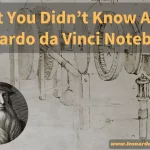

 Leonardo Bianchi,
the creator of Leonardo da Vinci's Inventions.
Thank you for visiting
Leonardo Bianchi,
the creator of Leonardo da Vinci's Inventions.
Thank you for visiting